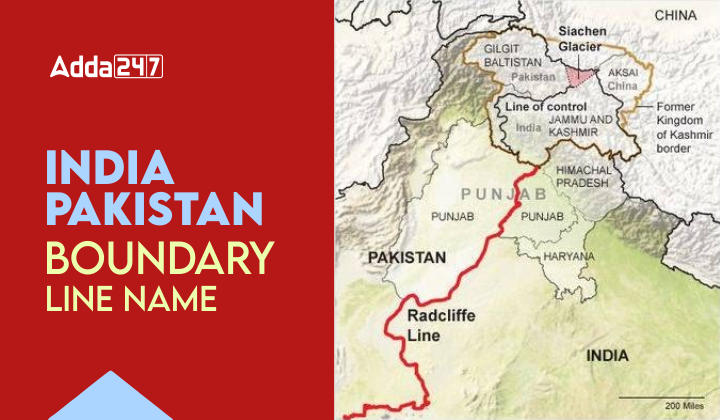The India-Pakistan Border is a substantial geopolitical boundary that encapsulates a complex history characterized by strife, intricacies and significance. Stretching across an extensive 3,300 kilometers, this border not only physically separates two nations but also reflects their interconnected past, disputes and the ongoing quest for peaceful coexistence.
India-Pakistan Border Line
On August 17, 1947, a significant moment in Indian history unfolded as the Radcliffe Line was unveiled demarcating the boundary that separated India from Pakistan after the partition. This line traverses the length of the Indian subcontinent, from the Rann of Kutch in Gujarat to the northern reaches of Jammu & Kashmir, creating two district nations.
Historical Context
Following the partition of British India in 1947, India and Pakistan emerged as independent entities. The Radcliffe Line, named after the chairman of the Border Commission, Sir Cyril Radcliffe, carved out separate territories for India and Pakistan, with profound implications for the subcontinent’s future.
Radcliff Line: A Line of Division
The Radcliffe Line divided the region into three parts:
- West Pakistan
- East Pakistan (present-day Bangladesh)
- India
Challenges and Decisions
The task of delineating border was particularly intricate in Punjab, where the population was dispersed and religious communities were intermingled. The Radcliffe Line had to account for various factors, including cultural references, irrigation systems, power networks and individual landholdings.
The border commissions, consisting of members nominated by the Muslim League and the Congress Party, struggled to agree on many issues. Consequently, the final decision fell to Radcliffe. Some areas faced particular challenges due to unclear religious majorities, as well as the presence of cultural and geographical complexities. For instance, Gurdaspur’s district’s Muslim-majority tehsils were awarded to India, while the Chittagong Hill Tracts with a non-muslim majority were allocated to East-Pakistan.
| Other Important Articles | |
| Longest Coastline in India | Largest Lake in the World |
| Biggest Animal in the World | Largest Airport in the World |
Human Toll and Displacement
The partition of India and drawing the Radcliffe Line came at a heavy human cost. The violence and upheavel surrounding the partition led to over a million of deaths and the displacement of around 12 million people. Communities that had coexisted for centuries found themselves on opposite sides of the border, often facing violence and uncertainty.
Jammu & Kashmir Complexities
The region of Jammu & Kashmir further complicated the situation. The Line of Control (LoC) divides the erstwhile princely states, while the Actual Ground Position Line (AGPL) adds another layer of complexity.
Legacy and Significance
The Radcliffe Line’s legacy endures in the subcontinent’s history. It symbolizes the struggle for independence, the consequences of colonial rule and the challenges of nation-building. The on-going disputes in Jammu & Kashmir and the hostilities between India and Pakistan remind us of the line’s enduring impact.
Find More General Studies News Here



 Indian Olympic Medal Winners List Till N...
Indian Olympic Medal Winners List Till N...
 Who is the Inventor of the Gramophone?
Who is the Inventor of the Gramophone?
 HS Dhaliwal Appointed New DGP Of Andaman...
HS Dhaliwal Appointed New DGP Of Andaman...
